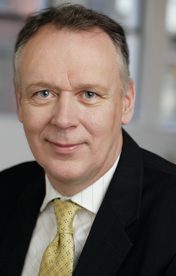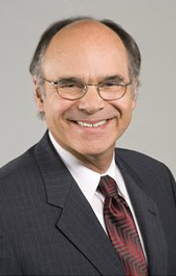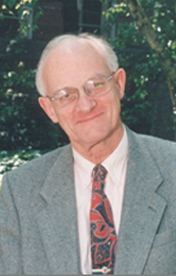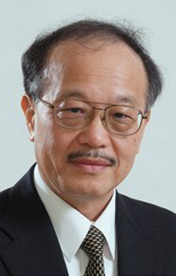Lehigh University
Office or Center Name Here
2011 Fazlur R. Khan
Distinguished Lecture Series
Honoring a legacy in structural engineering and architecture
Distinguished Lecturers |
|||
 |
 |
 |
 |
|
Extreme Engineering |
Building Disaster Resilient Communities |
Personal and Professional Recollections of Fazlur Khan |
Safeguarding Quality of Life: the Role of Large-Scale Testing |
DAVID SCOTT 
Arup, Americas Building Practice Leader
Past Chairman,
CTBUH, New York, NY
Extreme Engineering
click here to view video
Friday, February 18, 2011 - 4:10 pm
Location: Sinclair Lab Auditorium
Overview:
Modern computer design and fabrication technology gives architects and engineers the ability to design and build more complex and unusual structures than ever before imagined. This is good and perhaps bad. Many of the tools are easy to use, so that inexperience and lack of understanding can lead to buildings that are horrendously expensive and almost impossible to build. Similarly inexperienced engineers can apply standard codes and design philosophy to super-tall towers and the most complex of structures and assume that their buildings will have a comparable robustness and comparable risk to normal design; when codes are clearly not written with these unusual forms in mind. Yet when used effectively modern tools enable architects and engineers to design efficiency and simplicity into some of the most complex forms and create buildings that are unusual yet easy to build and only marginal more expensive than their square box alternates. Performance based design, whether it is for seismic, wind, fire or other extreme events also allows designers to design unusual buildings with confidence about their performance. David Scott PE will show how these recent advances in design and construction tools are changing the industry. He will show how an innovative and informed approach to design can lead to efficiency and simplicity. These examples include a range of towers and long span structures, that are both simple and complex, but all containing an elegant efficiency and construction led design that drives his work.
MORE DETAILS available on Scott's presentation. (PDF)
CHRIS D. POLAND
Chairman & CEO
Degenkolb Engineers
San Francisco, CA
Building Disaster Resilient Communities
click here to view video
Friday, April 8, 2011 – 4:10 pm
Location: Sinclair Lab Auditorium
Overview:
Healthy cities continuously grow by driving economic development while protecting their cultural heritage. Success, in part, depends on a healthy built environment that is rooted in contemporary urban planning, sustainability and disaster resilience. Our job, as design professionals, is to provide a built environment that supports all of those goals. Our designs need to be efficient, economical, adaptive, sustainable, and disaster resilient, regardless of which disaster strikes. We are doing well on all fronts except for the last. We need to develop, and have added to the code, provisions that will provide the buildings and lifelines needed to support disaster resilience. The San Francisco Planning and Urban Research Association (SPUR) recently published four policy papers related to what San Francisco needs from its seismic mitigation policies. Called the Resilient City Initiative, the papers define resiliency in a deterministic manner based on what the city needs from its buildings and lifelines to support response, recovery and rebuilding post-disaster. It is a set of goals that can be applied to any community facing any natural disaster. At the heart of the recommendations are the need for clarity in the hazard level and the expected damage from a disaster. Resilient communities have a credible disaster response plan that assures a place and ability to govern after a disaster has struck. While making the shift to updated codes requires new policies and community support, that change is not possible without solid, unified support from the science, architecture and engineering communities that support design. We need to take the time to understand this issue, join the conversation about how to achieve resiliency, build it into our research programs, convince our owners to incorporate it in their projects, and be a part of the common voice from our profession on how to change the codes. This is being done in San Francisco and steps are being taken to implement the SPUR recommendations.
MORE DETAILS availalable on Poland's presentation. (PDF)
DAVID BILLINGTON
Princeton University, Gordon Y.S. Wu Professor of Engineering, Emeritus; Professor of Civil and Environmental Engineering, Emeritus; Lecturer with the rank of Professor in Civil and Environmental Engineering
Personal and Professional Recollections of Fazlur Khan
![]() (click icon to view in Windows Media Player)
(click icon to view in Windows Media Player)
Friday, September 9th, 2011 – 4:30 pm
Location: Princeton University, Olden Street, Princeton, NJ – Friend Center Auditorium 101
Reception & Exhibit: 5:45 pm – 6:30 pm – Friend Center Lobby & Library
Driving & Parking Directions and Campus Map
This Distinguished Lecture is Organized by Professors Maria Moreyra Garlock and Sigrid Adriaenssens, Princeton University
Overview:
In 1961 searching for a new structures appointment at Princeton, I phoned Chester Siess for his best student. He responded “Fazlur Khan” so I called him but he preferred design to teaching. In the late 1960’s two submitted papers of mine on aesthetics of structures were harshly critiqued and turned down. I later learned that the critic was Fazlur Khan (he was correct in his review). Finally in 1971 I met him and invited him to Princeton where he lectured on April 11, 1972. He told me of his deep interest in Robert Maillart’s structures and agreed to write a paper comparing Maillart’s bridges to his own buildings for our Maillart conference. Khan’s elegant presentation together with those of Christian Menn and Felix Candela convinced me of a tradition in structural art.
Khan returned to Princeton several more times, one of those being only a few weeks before he died. This presentation will present such personal and professional recollections of Fazlur Khan, who became a good friend and colleague of mine through these experiences and others that I will share. I will also reflect on the influence Khan had on others as discussed in a memorial session that Myron Goldsmith and I organized at the ASCE October 1983 convention in Houston (which led us to edit a book devoted to Khan and published by the Council of Tall Buildings and Urban Habitat at Lehigh in 1986).
MORE DETAILS available on Billington's presentation. (PDF)
MASAYOSHI NAKASHIMA
Kyoto University, Disaster Prevention Research Institute, Kyoto, and
E-Defense National Research Institute for Earth Science and Disaster Prevention, Hyogo, Japan
Safeguarding Quality of Life: the Role of Large-Scale Testing
click here to view video
Friday, September 23rd, 2011 - 4:10 pm
Location: Sinclair Lab Auditorium
Overview:
A traditional attitude of earthquake engineering: “learning from actual earthquake damages”, is no longer acceptable as the resilience of society is naturally lessened with increasing diversity and complexity of the society. A practical alternative to this old attitude is to “learn from quasi-actual earthquake damages”, and one tool to this end is E-Defense, the largest shaking table in the world, developed in Japan after the 1995 Kobe earthquake. Since its inauguration in 2005, E-Defense has conducted forty some large-scale shaking table tests. This lecture introduces notable tests that had explored a variety of problems related to life-safety and quality-of-life during and after large earthquakes.
MORE DETAILS available on Nakashima's presentation. (PDF)
2011 Fazlur R. Khan Distinguished Lecture Series Announcement Flyer (PDF)
The Fazlur R. Khan Distinguished Lecture Series has been initiated and organized by Dan M. Frangopol, the first holder of Lehigh's Fazlur Rahman Khan Endowed Chair of Structural Engineering and Architecture.

Onterie Center
The Fazlur R. Khan Distinguished Lecture Series honors Dr. Khan's legacy of excellence in structural engineering and architecture.